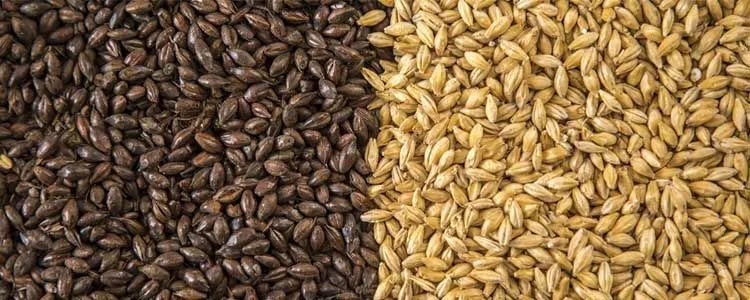There is a mistake in many people who assume that malt is a cereal. Although it is related in the world of cereal and beer production, malt or malting is a process of transformation of cereals. Therefore, it can be applied to all types of species such as cereals, as is the case of the barley malt.
In this article we let you know what the malting process consists of and what is obtained when it is done on barley. In addition, we tell you the benefits of carrying out this process and some interesting things that are also related to beer.
Table of Contents
What is barley malt?
Malting process
The malting of a cereal is a process that begins with the roasting after immersion in water, and whose objective is to release some sugars that contain these varieties and that are attractive for the manufacture of food and alcoholic beverages.
When cereal grains are immersed in water and moistened, the germination process begins. By controlling the humidity throughout the process, the hypocotyl of the seed, which is the whitish stem of the seeds, is achieved just as they begin to germinate. This process is carried out at a controlled temperature between 15 ºC and 18 ºC.
When this hypocotyl has a length similar to that of the seed, roasting begins. It is heated to a temperature of between 38 °C to 49 °C (depending on barley varieties) for 24 h. Subsequently, the temperature is increased between 60 °C and 71 °C, drastically reducing the humidity of the seed to less than 6%.
With this process it is possible to release enzymes from the seed to transform starch into sugars, which can later ferment to obtain alcohol, as is the case with beer.
In the case of barley, there are 2 types: barley with 2 strokes and barley with 6. For the malting and brewing process, the 2-race process offers better transformation conditions, so it is the one you usually use.
The distinction between dark or light beers depends on the temperature to which the barley malt is subjected. The higher the temperature (it can reach up to 120 ºC), the sugars caramelize, leaving a darker and more intense color, and with greater depth of flavor.

Gluten and barley malt
Barley is a forbidden food in celiac people who have gluten intelorancia. However, more and more beer varieties use cereal malts with a gluten content of less than 20 ppm, assimilable in the digestion of celiac people.
This can be applied to barley malt, but slightly changing the malting process. What is sought is to activate an enzymatic process where endoproteases are used in the fermentation phase that are able to drastically reduce the gluten content without modifying the original flavor of the product, or at least remarkably.
Not counting barley, there are also beers that use types of cereals without gluten content. This is the case of beers made with gluten-free grains, such as buckwheat, sorghum, millet or quinoa, among others.
Barley malt extract
Not only does malt from barley have application in the manufacture of alcoholic beverages such as beer. Thanks to the obtaining of simple sugars by starch transformation, it has its application in the preparation of sweets and desserts.
Barley malt extract is an ingredient used in food for its sweetening qualities. It serves as food for yeasts, to give a golden and attractive appearance to the bread or an added flavor to the milk. Its use is commonly used in the following foods:
- As an additive in elaborated and packaged meals.
- In pastries and pastries.
- Manufacture of ice cream and desserts.
- Preparation of hot drinks.
- Production of breakfast cereals.
Properties of barley malting
The consumption of barley and, in general, all kinds of cereals, is linked to a recommended diet due to the contribution of digestive fiber from this type of food. As we saw in the properties of barley infusion, this food offers a very balanced nutritional composition, is a probiotic that increases the population of beneficial microorganisms and contains natural compounds with antioxidant activity.
With the Barley malt, there are interesting enzymes that transform starch into simple sugars, which facilitates its digestion and assimilation when we take them.
In turn, barley malt obtained at lower temperatures contains a very interesting source of amino acids such as glutamic acid or lysine, which act as carriers and facilitate the absorption of minerals such as iron or calcium.
Contains flavonoids as antioxidant substances that are related to better blood circulation, reduced cholesterol and greater functionality of the heart.
Malted barley has diuretic action, helping in the elimination of retained liquids.
Malt infusion is recommended as a supplement in diets aimed at weight loss. This is due to its low fat intake, its high fiber content, its magnificent digestive qualities and its diuretic potential.
